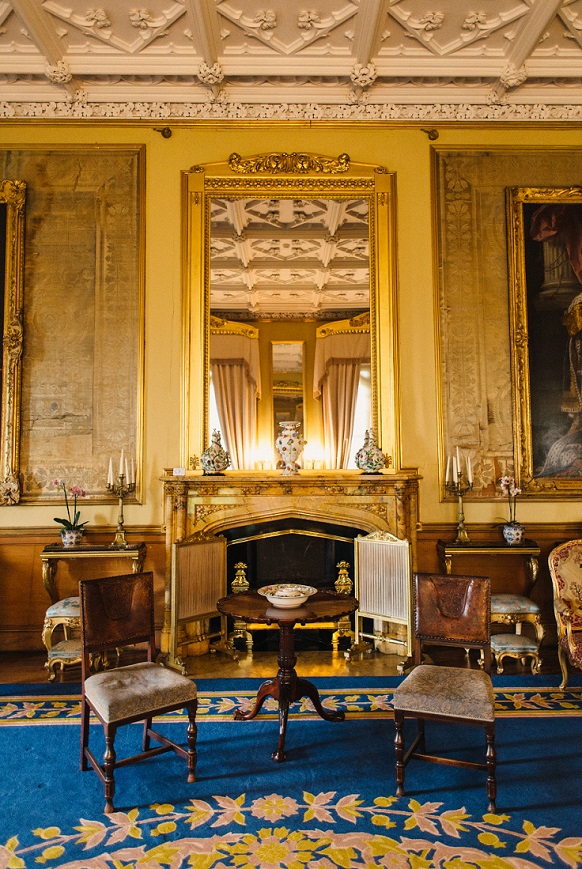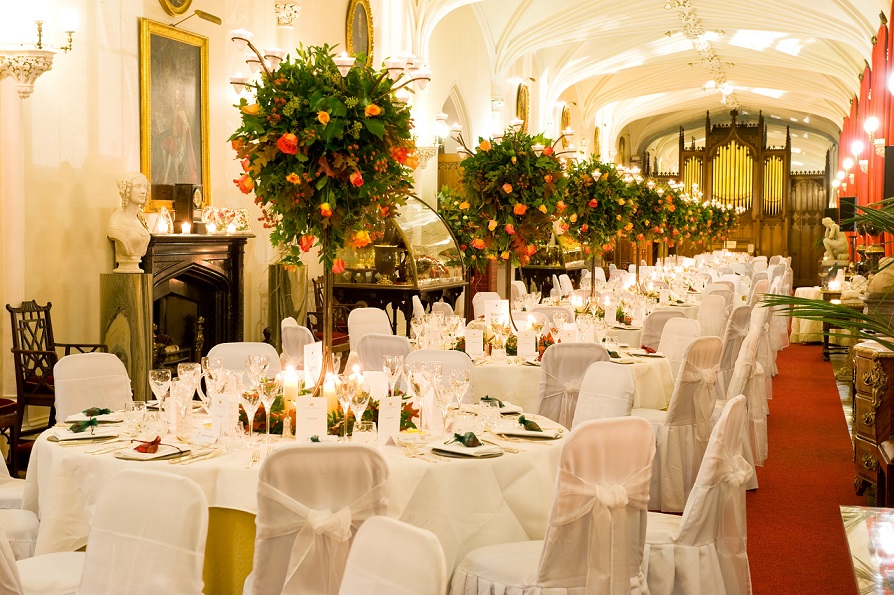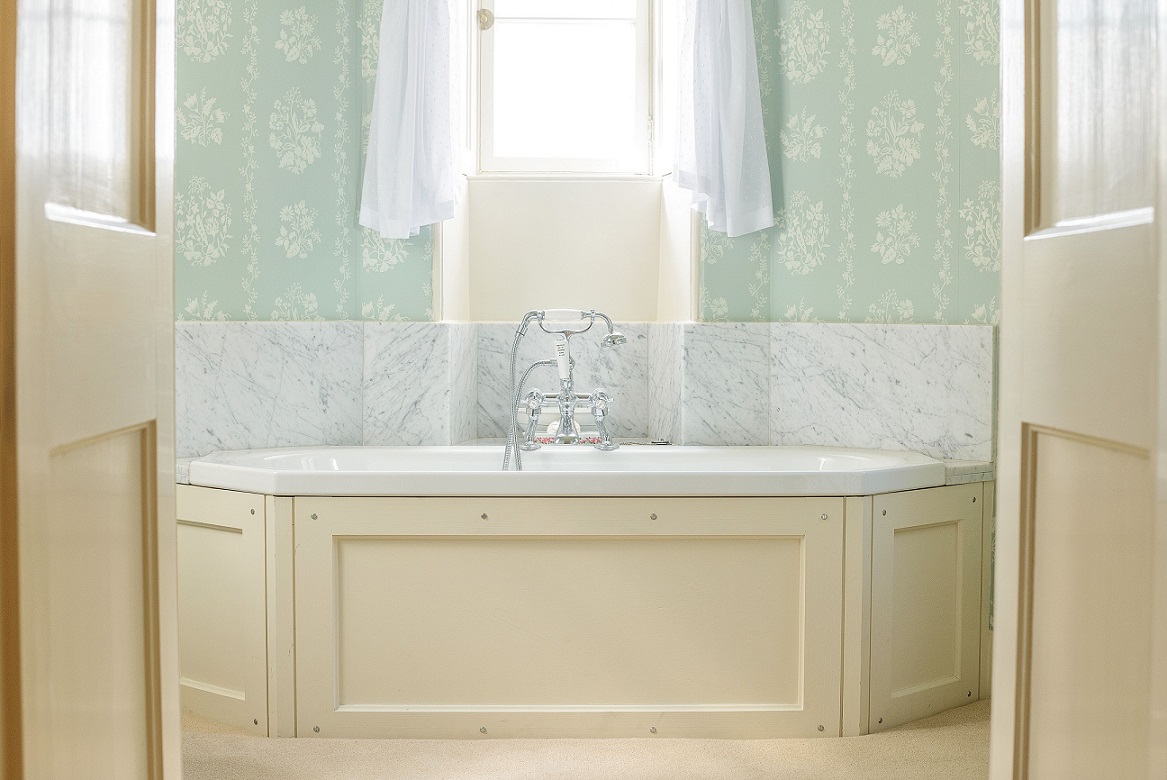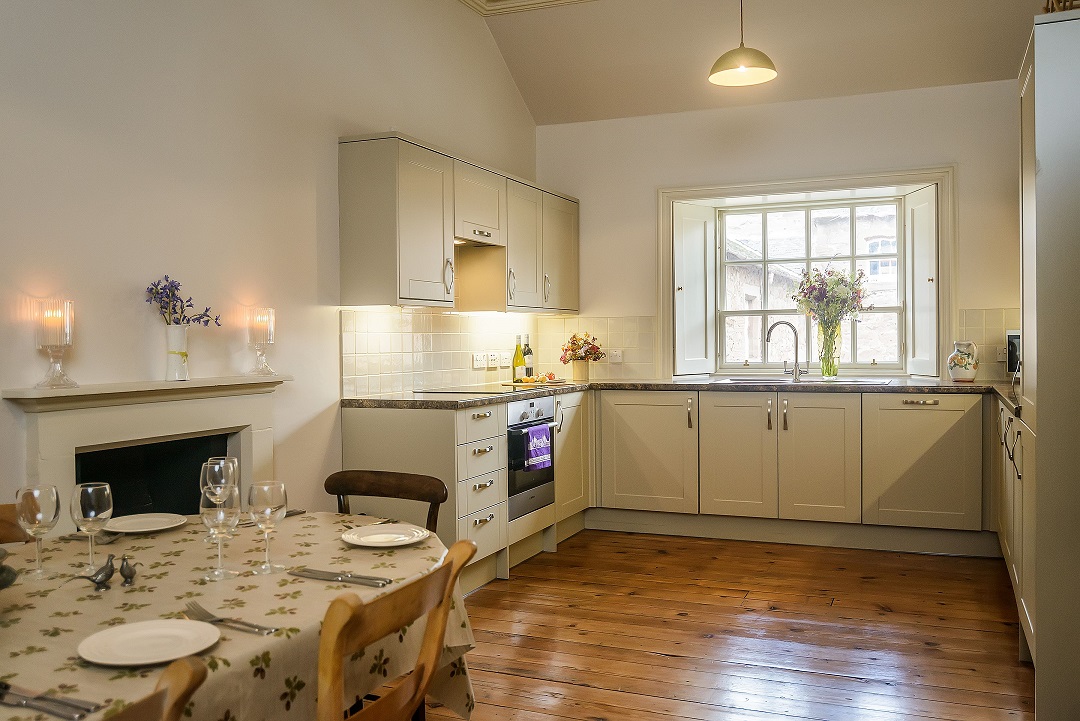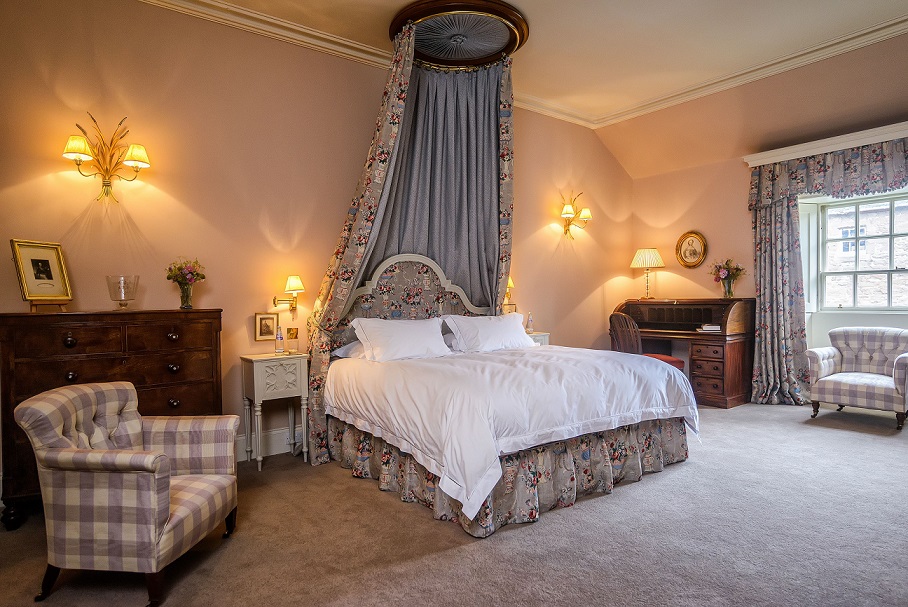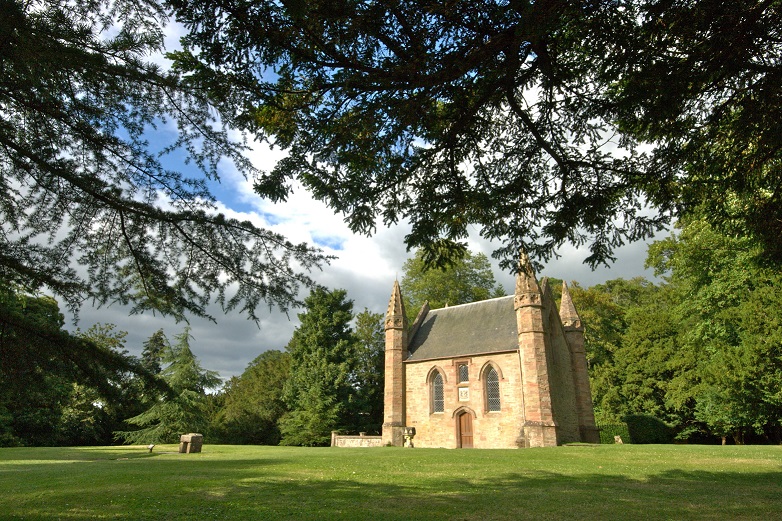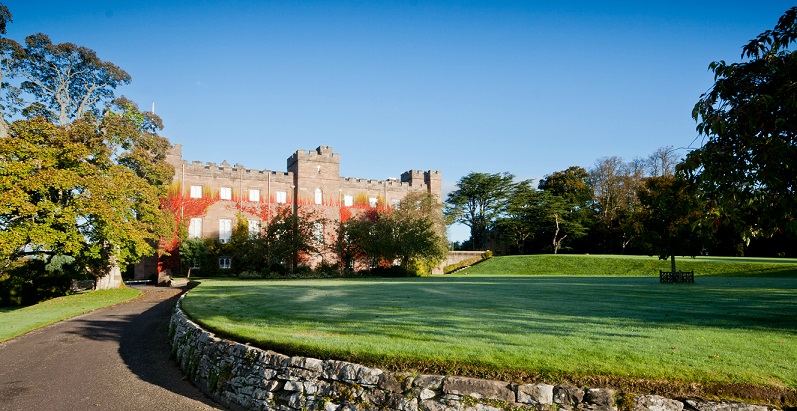苏格兰斯康宫
Scone Palace Scotland
scone-palace.co.uk
斯康宫
苏格兰国王加冕的永恒见证
斯康宫是苏格兰地位最高的豪华古宅之一,它的历史可谓风起云涌,色彩斑斓。1500年前,王宫是皮克特人首都。随后数世纪里,它又变身为议会所在地,包括麦克白和罗伯特布鲁斯在内的苏格兰国王都曾在此加冕,一朝称王。宫殿五百多年的收藏品,如古董名画珍贵文物等,每一件都记录了一个家族的辉煌,堪称无价之宝,举世闻名。这家豪气古宅凭借这些丰饶的“内涵”,称霸珀斯及苏格兰旅游市场。
世袭的曼斯菲尔德伯爵已在斯康宫居住400多年,宫殿里摆放着伯爵一家400多年里收藏的各类精品精雕细啄的法国家具精美绝伦的各色饰品东方的七彩陶瓷西方的精致表钟高大的灰熊战利品标本王冠大量的象牙雕制品……各个房间不时挂有伯爵一家的家庭照片,照片里,老少欢欣,其乐融融。
到王宫一访,徜徉在身为异教徒和基督徒的古代开国先贤的足迹里,如沐古风。这里是皮克特人重要的宗教聚集地,也是早期基督教教堂遗址。尤其是在王宫花园中的一方“命运之石”,耳闻多少君王的铮铮誓言,肃穆了时光。
命运之石,又称斯康之石,重152公斤,神秘而富传奇色彩。相传它是达尔里阿达第36任国王肯尼斯一世的加冕石。而历史学家的观点则是,Erc之子费格斯将这块神圣的石头从爱尔兰带至阿盖尔郡(英国苏格兰原郡名),并在其上加冕。孰是孰非,终成烟云。无论来源如何,命运之石终在Moot Hill安家落户,在苏格兰历代国王的加冕礼上,见证他们指天誓地,直到13世纪末才悄然退场。据说Moot Hill是由来这里参加国王加冕仪式的贵族带来的泥土堆砌而成,这些贵族会在靴子里面装满自己领土的泥土来到这里参加仪式,表示对国王权力的认可。
1306年,罗伯特布鲁斯在斯康王宫戴上王冠;1651年,最后一次加冕礼上,复辟的查尔斯二世接过苏格兰王冠,恭敬而庄重。
1296年,英格兰王爱德华一世占领苏格兰,命运之石被当作战利品带到威斯敏斯特教堂,镶嵌到闻名古今的爱德华木椅上。从此之后,多少英国国王端坐木椅上加冕为王,皇权倾国,君临天下。
1950年圣诞,四名苏格兰学生来到教堂,索回命运之石。让人扼腕的是,搬运过程中石头一裂为二。学生们带着较大的那块儿启程,却在边境遭到重重盘查,最终有惊无险,安全返回苏格兰。较小的石块儿最终沦落北方,经格拉斯哥石匠罗伯特格雷修缮,命运之石复活,附着其上的九五至尊的气息,也开始流转。
随后,英政府下令大规模搜查石头下落,但无功而返。1951年4月11日,保管人或许以为教堂不会将它归还给英格兰,所以把它放到阿布罗斯修道院祭坛上,由苏格兰教堂妥善保管。然而,伦敦警方得知了它的所在地,火速行动,斯康之石重回威斯敏斯特。不久,便有传言甚嚣尘上,声称石头已被复制,归还之石并非真品。
1996年,英政府将石头运送到爱丁堡城堡,颠沛流离,几经辗转,命运之石如漂泊的浪子,终究认祖归宗,回到苏格兰人民的怀抱。它履行最近一次使命,是在伊丽莎白女王二世的加冕礼上。它趟过历史长河,身负古老使命,不改初衷,影响日渐深广,除苏格兰君主之外,英格兰加拿大澳大利亚和新西兰国王也慕名而来,领受无上荣光。
纵使粗犷如苏格兰,斯康宫也如小家碧玉般秀美婉约。满墙的爬山虎,遮盖住它曾经历的腥风血雨。有四百多年历史的后花园中,孔雀高傲地踱着方步,披一身斑斓羽衣。“感谢所有的人,也感谢每一位在场者,应我们的邀请来斯康宫出席加冕仪式。”《麦克白》中这句经典的话,让斯康宫在苏格兰的历史长河中,永不沉没。
Scone Palace
The Crowning Place Of Scottish Kings
Scone Palace has an exciting and colourful history as one of Scotland‘s most important stately homes. Fifteen hundred years ago it was the capital of the Picts.In the intervening centuries, it has been the seat of parliaments and the crowning place of the Kings of Scots, including Macbeth and Robert The Bruce. The Palace houses an outstanding collection of antiques, paintings and rare artifacts and the grounds are renowned throughout the world, making the stately home one of the most popular tourist attractions in both Perth and Scotland.
The hereditary Earl of Mansfield has been living in Scone Palace for over 400 years, producing various boutiques with the timespan for more than four centuries. Refined French furniture, exquisite accessories, colorful ceramics from the oriental, western clocks, tall grizzly bear spoils of war, the crowns, lots of carved ivory crafts… Sometimes one may find the family shot of the Earls’, each one beaming and content.
When you visit the Palace you are walking in the footsteps of Scotland’s ancient founding fathers, both pagan and Christian. It was an important religious gathering place of the Picts, it was the site of an early Christian church and it housed the Stone of Destiny.
The Stone of Scone, also known as the Stone of Destiny, comes wrapped in myth and legend. Tradition has it that it was the coronation stone of Kenneth MacAlpin, the 36th King of Dalriada.But the historical view is that Fergus, son of Erc brought the revered stone from Ireland to Argyll, and was crowned on it. Whatever the origin, the Stone of Destiny was placed on the Moot Hill and used in the coronations of the Kings of Scots until the end of the 13th century.
Robert the Bruce was crowned at Scone in 1306 and the last coronation was of Charles II, when he accepted the Scottish crown in 1651.
In 1296 the Stone of Destiny was captured by Edward I as spoils of war and taken to Westminster Abbey, where it was fitted into a wooden chair, known as King Edward‘s Chair, on which most subsequent English sovereigns have been crowned.
On Christmas Day 1950, a group of four Scottish students reclaimed the Stone from Westminster Abbey. In the process of removing it however, the stone broke into two pieces. Taking the larger piece the students risked road blocks on the border and returned to Scotland.The smaller piece was eventually brought north and the Stone of Destiny was repaired by Glasgow stonemason Robert Gray.
A major search for the stone had been ordered by the British Government, but this proved unsuccessful. Perhaps assuming that the Church would not return it to England, the stone‘s custodians left it on the altar of Arbroath Abbey, on 11 April 1951, in the safekeeping of the Church of Scotland.Once the London police were informed of its whereabouts, the Stone of Scone was returned to Westminster.Afterwards, rumours circulated that copies had been made of the Stone, and that the returned Stone was not in fact the original.
In 1996, the Stone was finally restored to the people of Scotland when the British Government moved it to Edinburgh Castle. The Stone of Destiny was last used at the coronation of Queen Elizabeth II and so it still performs its ancient duty, and to far greater effect, making not only the monarch of the Scots but of Britain, Canada, Australia and New Zealand.
Although Scotland is crude, Scone Palace is still like a jasper, tender and graceful. Walls of boston ivies cover its surface which has gone through twists and turns. The back garden, with over 400 years of history, houses proud peacocks in colorful feathers. “Thank all, and thank each one present here to attend the coronation ceremony, upon our invitation, here in Scone Palace.”These classical words in Macbeth by Shakespeare definitely highlight Scone Palace in the long history of Scotland.






